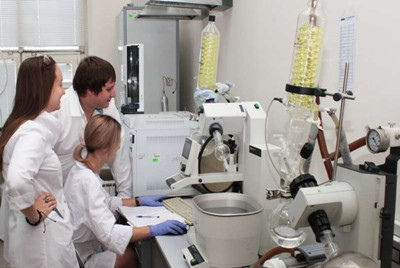
Hydrogen is considered as one of the promising alternative energy sources. Nevertheless, its application as an energy carrier is complicated due to its highly explosive nature when mixed with oxygen. These dangerous situations may arise, for example, in case of hydrogen leaks from the tank where it is stored.
"Therefore, it is necessary to detect hydrogen molecules in a gas mixture. Currently, there are various methods, including electronic sensors, although they are a potential source of spark. In this respect, we turned our attention to optical fiber. This is a simple and commercially available material. In addition, a sensor can be operated remotely, since optical fiber provides rapid and easy information transfer over long distances. The sensor can be installed in the engine of a hydrogen-powered machine or refueling station," Pavel Postnikov, one of the authors and Associate Professor of the TPU Research School of Chemistry & Applied Biomedical Sciences, says.
Optical fiber is a thin filament of optically transparent material, e.g. glass or plastic, capable of transmitting digital information in the form of a light pulse. The researchers modified fibers by removing a fragment of the fiber sheath and applying a fine layer of gold in its place through magnetron sputtering. On the surface of this golden area, the effect of surface plasmon resonance arises. It is the source of the analytical signal. The researchers used this golden area from a matrix solution as a basis for a metal-organic framework consisting of zinc molecules and particular organic compounds.
"This frame is extremely sensitive to hydrogen, since it captures its molecules from the air. Moreover, it is inert to other gases. Such sensors are comparable to a stationary chromatograph that is ten times more expensive and requires qualified personnel. For now, we have managed to achieve sensitivity and detection limit below 2%. In other words, our sensor can detect hydrogen in the air at a concentration below 2%, while the lower explosive threshold of a mixture of hydrogen and oxygen is about 4%," Pavel Postnikov says.
The main advantages of the sensor embrace simplicity, sensitivity, and an option for quick remote diagnostics.
"Another important feature is the sensor resistance to oxidizing gases, for instance, carbon dioxide, and various oxides. It is a problem for the modern sensors since these gases interfere with the sorption of hydrogen. Our sensor can easily work in the open air full of such gases," the researcher adds.

